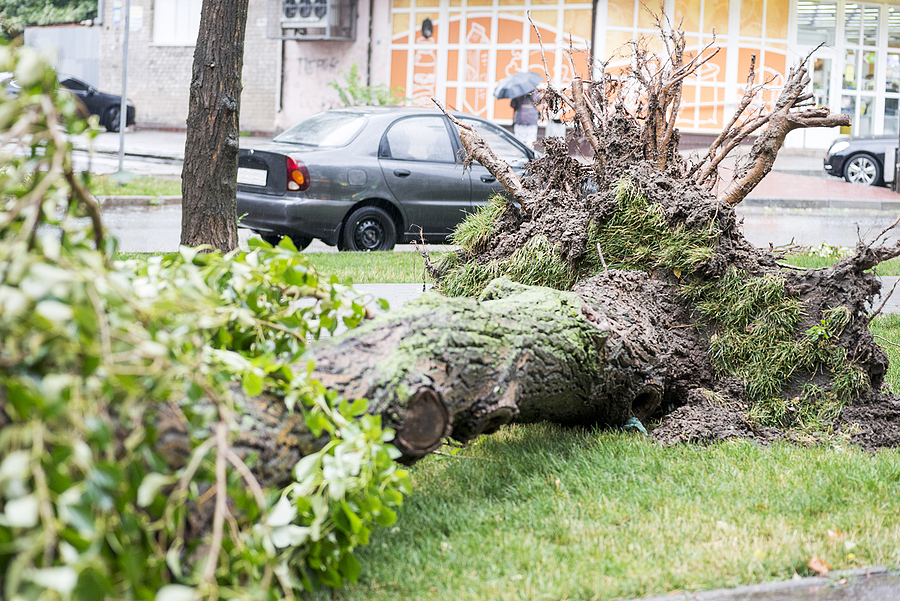What You Need to Know about Storms and Tree Damage

From summer thunderstorms to tropical storms and hurricanes, Mother Nature has a way of keeping us on our toes—indoors and hoping the power stays on. Trees often provide the most visible indicator of a storm’s intensity, both during the event and in its aftermath. Clearing yard debris can be annoying, but dealing with downed trees is far worse.
This article offers practical guidance for what to do when storms topple trees.
Protect Yourself with Preventive Tree Maintenance
Structural damage caused by fallen trees and branches is a leading cause of homeowners insurance claims during hurricane season (June 1 through November 30) and the winter months, due to ice or snow buildup.
While homeowners have no control over the weather, they can help prevent such incidents through regular tree maintenance. In fact, property owners are responsible for tending to their trees. This means trimming weak branches or those hanging over the house, checking trees for disease and pests, and removing dead or dying trees.
Failure to perform this maintenance could place liability for fallen trees or branches squarely on the homeowner. If an insurance provider finds that a homeowner was negligent and should have known the tree was in danger of falling, they’ll likely deny the claim.
Consider hiring a professional to inspect and maintain trees as part of your regular spring maintenance.
How to Handle Tree Storm Damage to Your Home
If a storm knocks a tree or large branches onto your home, evacuate and make sure everyone is safe. Then, call 911. If you can do so safely, cover any openings with a tarp to limit additional damage.
Your homeowner’s insurance policy will probably cover any damage to your home or other structures, such as a detached garage, as well as damage to contents. (Note: Automobiles are handled separately, as indicated below.) Whether the fallen tree belongs to you or a neighbor, you file the claim with your insurance company.
Homeowners’ insurance can include additional protection. For instance, most policies will also provide coverage for alternate living arrangements if the resulting damage renders the home uninhabitable. Some insurance companies offer supplemental food spoilage protection, in case of extended power outages. Contact your insurance partner for the specifics of your policy, as well as for information about optional protection.
How to Handle Tree Storm Damage to Your Car
If your car is damaged by a fallen tree or branches, it will be covered by your automobile insurance instead of your homeowner’s policy—provided the policy includes comprehensive coverage. The coverage would be subject to the policy deductible.
Removing Fallen Trees and Branches
If the tree or branches fall on a covered structure or your vehicle (again, assuming comprehensive auto coverage), removal of the tree debris will likely be covered. However, if the downed tree doesn’t hit a structure or car, the homeowner is generally responsible for covering the costs of removal. That said, some insurance companies may cover tree removal if the tree is blocking either a driveway or a wheelchair ramp.
Consult Your Insurance Partner Before the Storm
To ensure proper protection, and to avoid unpleasant surprises after making a claim, speak with your insurance partner to discuss your homeowner and auto policies. Damage caused by floods, earthquakes or hurricanes may cover higher deductibles—or they may be excluded entirely. Homeowners with high-value landscaping should consider additional protection.
If you have any questions about your current insurance policy, or for a free insurance review, please call us at 877-576-5200.


Comments (0)